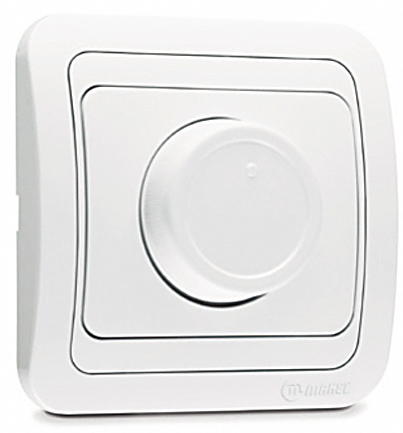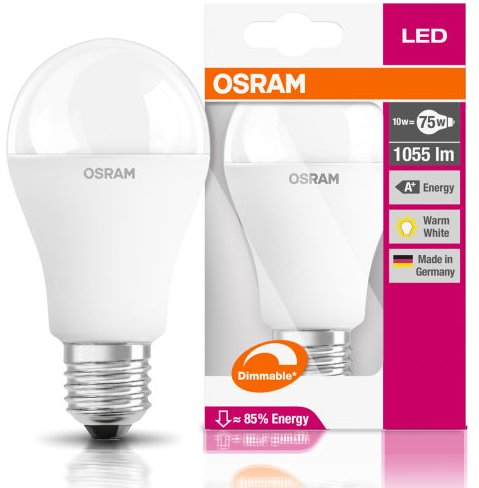Categories: Featured Articles » Sources of light
Number of views: 3782
Comments on the article: 1
How are dimmable LED lamps arranged and working, unlike ordinary ones?
An ordinary non-dimmable LED lamp, if we are talking about a high-quality product, contains in its basement a miniature step-down converter for mains voltage, the so-called pulsed DC-DC converter (see - Simple transformerless pulse voltage converters).
The task of this unit is to obtain an alternating mains voltage (220-230 volts), first rectify it into a constant voltage, and then convert this constant voltage to a low constant voltage at the lamp output, and the magnitude of the received output voltage must exactly match the installed load, that is, a chain of LEDs, which stands in this particular lamp.
This step-down DC-DC converter inside a non-dimmable LED lamp has a stabilized output, which means that for any deviation (within reasonable limits) of the effective value of the supply voltage from ordinary 220-230 volts, the output will still have as many volts as needed, because the converter it will automatically adjust its operation parameters to give the LEDs a “correct” and sufficient supply voltage for a normal glow.

If the voltage in the network drains too much, then the non-dimmable LED lamp will simply go out or start to flicker noticeably, since the input of the converter built into the lamp is designed for a limited range of input voltages.
If you connect such a non-dimmable LED lamp to a conventional dimmer for incandescent lampshow will she behave? As you know, a conventional dimmer performs phase cutoff of a network sine wave, thus reducing the rms value of the supply voltage.

So, while the average voltage value from the dimmer output is enough for the normal operation of the pulse converter built into the lamp, the lamp will work as if nothing had happened - the brightness will not decrease at all.
But when we try to significantly reduce the brightness of the lamp by adjusting the dimmer, we first notice that the lamp starts to flicker (the input voltage will not be enough for the converter), and then it goes out. And if the dimmer also turns out to be of poor quality, then it itself can fail, because in principle it is not intended to power a pulse load. This question is considered in more detail here:Why you can’t dim ordinary 220V LED lamps
There are special so-called "LED dimmers" that allow you to adjust the brightness of LED lamps. We talked more about them here: LED dimmers and their use
In this article, the talk is about special LED lamps, the brightness of which can be regulated by ordinary dimmers, designed for incandescent lamps.
A dimmable LED lamp (dimmable lamp) differs from a non-dimmable LED in that there is an additional circuit at the input of its built-in DC-DC converter that measures the rms value of the supplied alternating voltage. And the LEDs at the output voltage are set corresponding to - proportional to the input.
Even if the voltage from the dimmer is supplied in the form of a "cut into pieces a sinusoid", the lamp circuit will see this and behave appropriately - it will reduce the brightness.

But the limits of regulation and the accuracy of tuning the internal lamp driver depend on its quality. Therefore, when choosing a dimmable LED lamp, preference should be given to lamps from reliable manufacturers such as Philips, Gauss, Osram, etc., to those that have already proven themselves well. And of course, it is important to remember that a dimmable LED lamp always has a "dimmable" mark on its packaging.

Currently produced more modernSmart-Lamps, which in addition to adjusting the brightness can change their color, and may also have many other useful features(can work according to various pre-conceived scenarios, imitate the presence of the owners in the house, etc.). Read more about these lamps here: Smart lamps: device, types and their application
See also on our website:Circuitry of power supplies for LED strips and not only
See also at bgv.electricianexp.com
:
